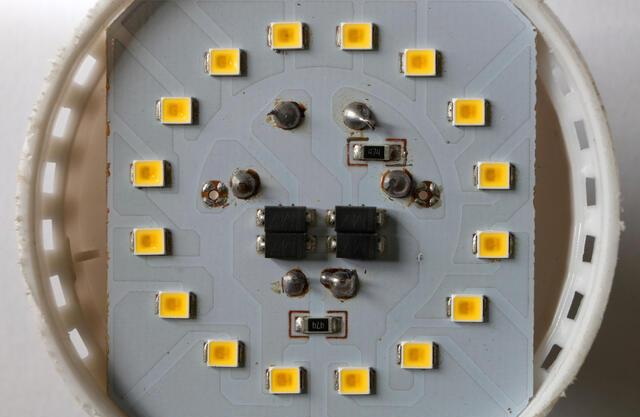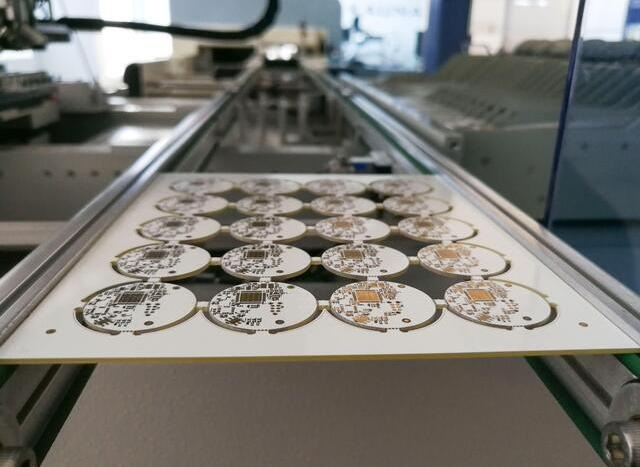Content Menu
● Understanding SMT Splice Tape
>> Key Features of SMT Splice Tape
● The Role of SMT Splice Tape in Component Feeding
>> 1. Continuous Production Flow
>> 2. Precision Alignment
>> 3. Reduced Labor Costs
>> 4. Enhanced Machine Performance
● Benefits of Using SMT Splice Tape
● Environmental Considerations
● Best Practices for Using SMT Splice Tape
>> 1. Choose High-Quality Tapes
>> 2. Proper Training
>> 3. Regular Maintenance
>> 4. Follow Manufacturer Guidelines
● Common Issues and Solutions
● Conclusion
● FAQ
>> 1. What is SMT splicing?
>> 2. How does SMT splice tape improve production efficiency?
>> 3. Are there different types of SMT splice tapes?
>> 4. What should I consider when choosing SMT splice tape?
>> 5. How can I ensure proper application of SMT splice tape?
● Citations:
In the realm of electronics manufacturing, the efficiency and reliability of component feeding systems are paramount. Surface Mount Technology (SMT) has revolutionized the way electronic components are assembled, and one critical element in this process is the use of SMT splice tape. This specialized adhesive tape plays a vital role in ensuring that component reels can be seamlessly joined, facilitating uninterrupted production lines and minimizing downtime. In this article, we will explore how SMT splice tape guarantees accurate and reliable component feeding, examining its functionality, benefits, and best practices for use.

Understanding SMT Splice Tape
SMT splice tape is designed to connect the ends of two component reels—typically made of paper or plastic carrier tape—allowing for continuous feeding of components into automated assembly machines. The primary purpose of this tape is to create a strong yet flexible bond between the old and new reels, ensuring that components are fed smoothly without interruption.
Key Features of SMT Splice Tape
- High Adhesive Strength: SMT splice tapes are manufactured with high-quality adhesives that provide a robust bond capable of withstanding the rigors of automated feeding systems.
- Variety of Sizes and Thicknesses: These tapes come in various widths and thicknesses to accommodate different types of carrier tapes and machine requirements.
- Clear or Colored Backing: Some splice tapes feature clear backing for easy alignment, while others have colored backing to enhance visibility during the splicing process.
- ESD Compliance: Many SMT splice tapes are designed to be electrostatic discharge (ESD) compliant, which is crucial for protecting sensitive electronic components during assembly.
The Role of SMT Splice Tape in Component Feeding
The integration of SMT splice tape into the component feeding process significantly enhances production efficiency. Here's how it works:
1. Continuous Production Flow
By using SMT splice tape, manufacturers can join new reels to existing ones without stopping the assembly line. This continuous flow minimizes downtime associated with reel changes, allowing for a more streamlined production process. The ability to splice tapes effectively means that manufacturers can maintain high throughput levels, which is essential in meeting production targets.
2. Precision Alignment
Automated splicing machines equipped with SMT splice tape ensure that the ends of the component reels are aligned accurately. This precision is essential for maintaining consistent placement of components on printed circuit boards (PCBs), reducing the likelihood of errors that could lead to defects. The accuracy provided by these tapes ensures that each component is placed exactly where it needs to be, enhancing overall product quality.
3. Reduced Labor Costs
The automation of the splicing process reduces the need for manual intervention, which not only cuts labor costs but also decreases the potential for human error. Operators can focus on monitoring production rather than performing repetitive tasks, leading to better resource allocation within manufacturing environments.
4. Enhanced Machine Performance
SMT splice tape helps maintain optimal performance in pick-and-place machines by reducing machine abrasion caused by frequent reel changes. This longevity translates into lower maintenance costs and improved overall productivity. By minimizing wear on machinery, manufacturers can extend equipment lifespans and reduce replacement costs.
Benefits of Using SMT Splice Tape
The advantages of incorporating SMT splice tape into electronic assembly processes extend beyond mere convenience:
- Increased Efficiency: By facilitating uninterrupted production, SMT splice tape can boost output by 5% to 30%, significantly enhancing manufacturing efficiency.
- Cost Savings: Reducing downtime associated with reel changes leads to substantial cost savings in both labor and production time.
- Improved Quality Control: The accuracy provided by automated splicing minimizes defects caused by misalignment or improper feeding, contributing to higher quality end products.
- Flexibility: With various types available—such as single splice tapes and double splice tapes—manufacturers can select products tailored to their specific needs, whether they require additional strength or ease of use.

Environmental Considerations
When selecting SMT splice tape, it is essential to consider environmental factors such as temperature and humidity. These elements can significantly impact the performance of adhesive materials. For instance:
- Temperature Sensitivity: High temperatures may compromise adhesive strength, while low temperatures could affect flexibility. It's crucial to choose a tape designed for your specific operational environment.
- Humidity Levels: Excessive moisture can weaken adhesive bonds. Therefore, storing SMT splice tapes in controlled environments helps maintain their integrity over time.
Best Practices for Using SMT Splice Tape
To maximize the benefits of SMT splice tape, manufacturers should adhere to several best practices:
1. Choose High-Quality Tapes
Investing in high-quality SMT splice tapes minimizes risks associated with blockages and misfeeds. Quality products ensure reliable performance throughout the production cycle. Manufacturers should source their tapes from reputable suppliers who guarantee product quality.
2. Proper Training
Operators should be trained on best practices for using SMT splice tapes effectively. Understanding how to apply the tape correctly can prevent common issues such as misalignment or improper adhesion. Regular training sessions can help keep staff updated on new techniques and technologies.
3. Regular Maintenance
Maintaining splicing tools and machines is essential for optimal performance. Regular checks can help identify wear and tear that may affect splicing accuracy. Scheduled maintenance reduces unexpected breakdowns during production runs.
4. Follow Manufacturer Guidelines
Each type of SMT splice tape may have specific application instructions or compatibility requirements with different feeder systems. Adhering to these guidelines ensures effective use and maximizes performance.
Common Issues and Solutions
Despite its reliability, issues can sometimes arise during the splicing process:
- Tape Not Sticking: If the tape fails to adhere properly, ensure that surfaces are clean and dry before application. If problems persist, check if the tape has expired or been damaged during storage.
- Components Not Aligned: Misalignment can occur if reels are not positioned correctly before splicing. Always verify alignment before applying the tape to prevent this issue.
- Environmental Factors Affecting Adhesion: Changes in temperature or humidity may impact adhesive performance; thus, monitoring environmental conditions is crucial during production.
Conclusion
SMT splice tape is an indispensable tool in modern electronics manufacturing, providing a reliable solution for ensuring accurate component feeding. Its ability to facilitate continuous production flow while enhancing precision and reducing labor costs makes it a critical component in achieving operational efficiency. By selecting high-quality tapes and following best practices, manufacturers can optimize their assembly processes, ultimately leading to improved product quality and profitability.

FAQ
1. What is SMT splicing?
SMT splicing is the process of joining two reels of surface mount device (SMD) components using specialized adhesive tapes to ensure continuous feeding into automated assembly machines.
2. How does SMT splice tape improve production efficiency?
By allowing seamless transitions between component reels without stopping production lines, SMT splice tape minimizes downtime and increases overall output by facilitating continuous operation.
3. Are there different types of SMT splice tapes?
Yes, there are various types available including single splice tapes, double splice tapes, and those designed specifically for certain feeder systems or ESD compliance.
4. What should I consider when choosing SMT splice tape?
Consider factors such as adhesive strength, size compatibility with your feeder systems, ESD compliance if necessary, and whether you need features like clear backing for easy alignment.
5. How can I ensure proper application of SMT splice tape?
Proper training for operators on application techniques, regular maintenance of splicing tools, and following manufacturer guidelines will help ensure effective use and minimize issues during production.
Citations:
[1] https://www.khj.com.cn/news/the-ultimate-guide-to-smt-splicing-tape-everything-you-need-to-know-143816.html
[2] https://kanghongjin.singoosite.singoo.xyz/blog/continuous-splicing-improves-smt-efficiency-smt-splicing-tape
[3] https://www.allsmt.com/Double-Splice-Tapes
[4] https://www.allsmt.com/SMT-splicing-tapes-and-Extenders-a-valuable-aid-in-electronics-production
[5] https://www.tapesolutions.saint-gobain.com/na/en/resources/blog/what-are-splicing-tapes-and-why-do-they-matter
[6] https://www.antistat.co.uk/smt-splice-tape-tools/
[7] https://www.ad-adhesive.com/blog/how-to-use-splice-tape/
[8] https://www.youtube.com/watch?v=UAaee_ybiEg
[9] https://www.smtsplice.de/en/start/
[10] https://www.adoptsmt.com/en/splicing/




















